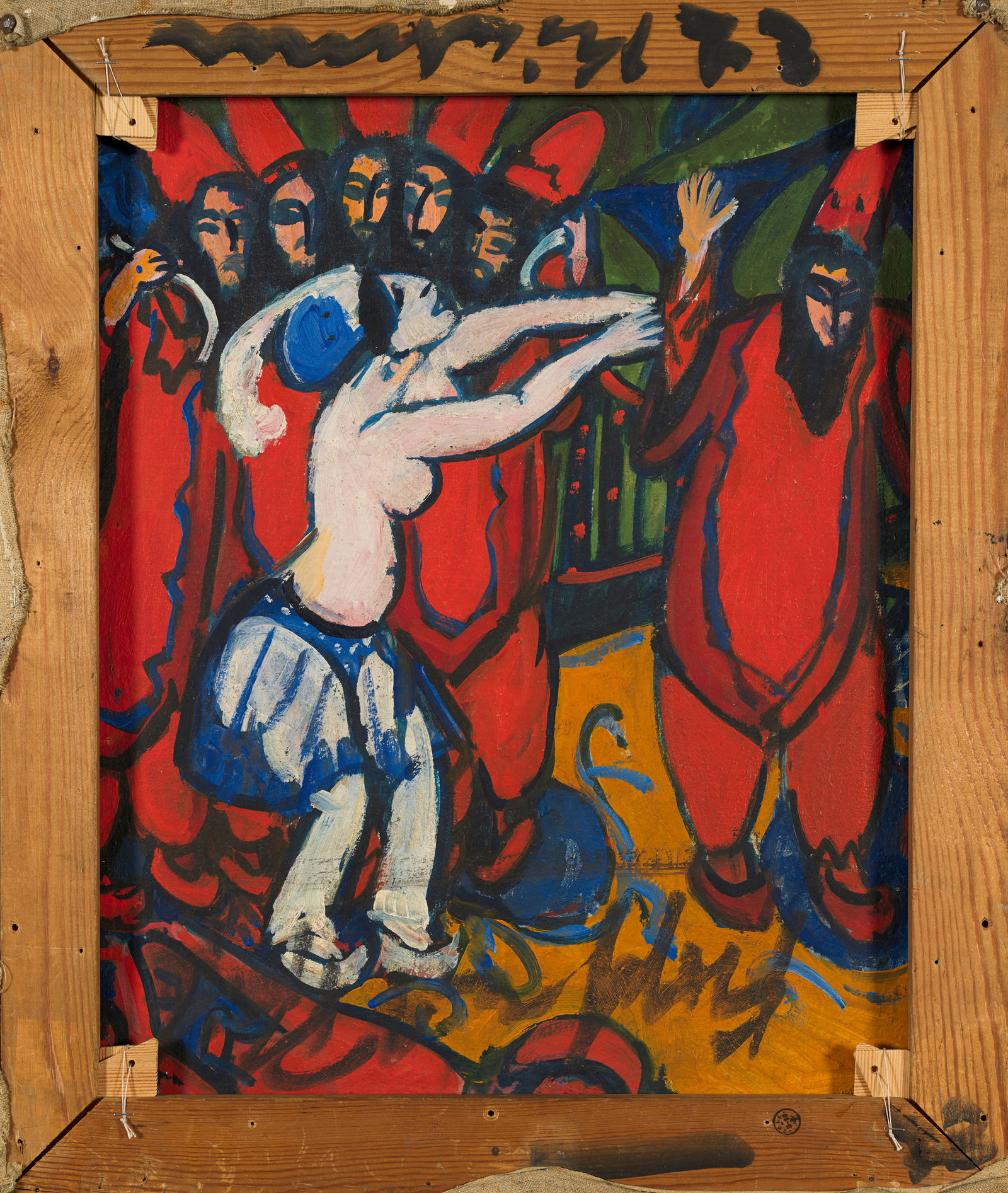
Ernst Ludwig Kirchner
Zirkusszene
Rahmenmaß 81,2 × 71,2 × 4 cm
Exhibitions (selection)
- How to Brücke-Museum: Ein Blick hinter die Kulissen , 2022/2023, Brücke-Museum, Berlin
1910: Brücke. Kunst und Leben, 2022, Brücke-Museum, Berlin
Whose Expression? Die Künstler der Brücke im kolonialen Kontext , 2021/22, Brücke-Museum, Berlin
Literature (selection)
- Magdalena M. Moeller (Hg.), Brücke-Museum Berlin, Malerei und Plastik. Kommentiertes Verzeichnis der Bestände, Hirmer Verlag, München 2006.
Werner Murrer, Lisa Marei Schmidt und Daniel J. Schreiber (Hg.), UNZERTRENNLICH. Rahmen und Bilder der Brücke-Künstler, Ausst.-Kat. Brücke-Museum Berlin, Koenig Books, London 2020.
Details
Tags
Bildgattung: Figurenbild, Szene, Akt
Schlagwort: Tanz, Variété, Vergnügung
Album: Rückseiten
GND
Referenz: Gupta-Kunst, Salome. Salomes Tanz
Iconclass
Zirkus
die (nackte) menschliche Figur; Ripa: Corpo humano – AA – weibliche Figur
Tänzerin
stehende Figur
erwachsener Mann
erwachsene Frau
tanzen
Inscription/Signature
Nicht signiert (Signatur)
auf dem Bildträger:
Kopf mit Pfeife (Bezeichnung)
auf dem Keilrahmen um 180° gedreht:
E L Kirchner (Bezeichnung)
auf dem Rahmen um 90° gedreht:
Kopf mit Pfeife (Bezeichnung)
Inventory Number
46/71 v
Catalog Number
Gordon 296 v

